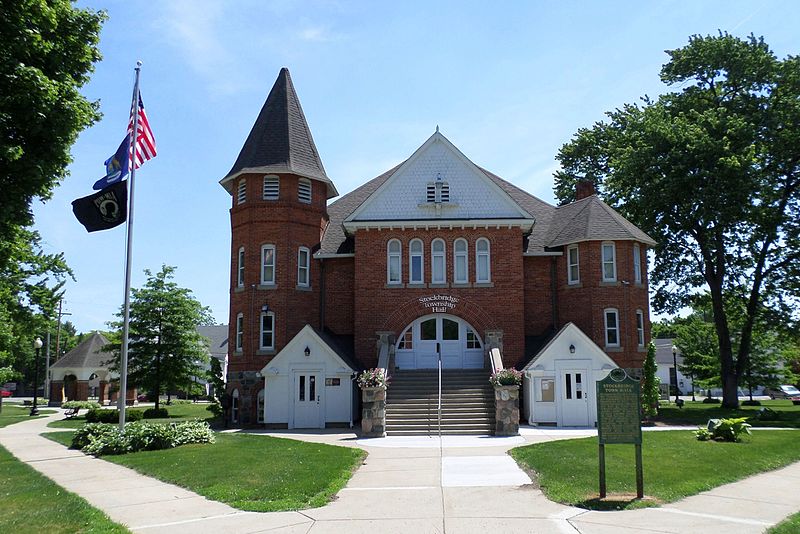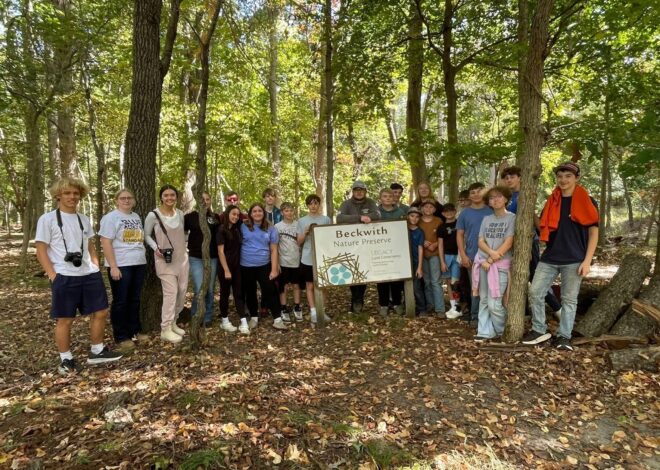Stockbridge Township paves way for $2.4 million solar farm

revised 7/19 and & 7/20/2018
by Patrice Johnson
July 11, Cypress Creek Renewables moved a step closer to building a $2,400,000 solar farm in Stockbridge Township, thereby launching its entrance into Michigan.
“It is the first site we have taken through the zoning approval process in the state,” wrote Kat Webber, CCR’s Community Engagement Manager.
Planning Commission Chairman Molly Howlett said CCR, “came to Stockbridge first because we happen to have ordinances in place, whereas other areas do not.” She said commissioners had assumed a request to generate commercial wind energy would happen first. “We included solar energy as a sideline,” she said.
After holding a public hearing, Stockbridge Township’s Planning Commission voted to recommend acceptance of CCR’s preliminary, 20-acre site plan. Now, the plan passes to the Stockbridge Township Board for final approval or disapproval.
“We made a recommendation to the Stockbridge Township Board to approve this preliminary site plan,” Howlett said. Approval was contingent, she added, on CCR’s final drawings including landscaping to “make it more appealing to passersby, especially those on Lakeland Trails.”
According to the $2,400,000 project plan, CCR proposes to develop a 2 megawatt solar energy facility on South M-106 between Krummrey Lane and Green Road, bordering Lakeland Trails State Park. Landowners James and Michael (Mickie) Watters plan to lease the site to CCR.
The plan states, “Stockbridge can expect: spending of about $1,800,000 in the local economy; approximately 20 full-time equivalent (FTE) local construction and installation jobs; and additional tax revenue over the lifetime of the project.” Local expenditures are forecast to include parts and labor, goods and services, fuel and lodging, dining and other consumer resources.
“During the ongoing operational life of the project,” Webber said, “local investment is expected to exceed $18,000 annually.”

Solar farms, not farms in the sense of people growing crops or raising animals on them, consist of photovoltaic (PV) modules that capture energy from the sun and produce electricity. Once in place, the modules require little maintenance or upkeep and may “operate more than two decades without so much as a tune-up,” according to the Earth Project (theearthproject.com/solar-farms-pros-and-cons/).
Wilmore Solar, LLC is also known as CCR, LLC. Both are limited liability companies, hybrid legal entities having certain characteristics of both a corporation and a partnership or sole proprietorship.
CCR’s website states, “With well over $2 billion raised and invested and over 5 gigawatts of local solar farms deployed or in development, Cypress Creek Renewables is the largest and fastest-growing dedicated provider of local solar farms.”
“It’s a long process,” Howlett said. “This is just the first step of many. They have to go through MDOT, DEQ, EPA and, last of all, Consumers Energy, which is slow.”
The solar farm would feed into the Consumers Energy power grid, and the utility is said to prefer to generate its own power. “They are not real fast at accepting other sources of power,” Howlett said, “but they are obligated to do so, eventually.”
If implemented, CCR’s plan calls for rows of Photovoltaic (PV) cell panels to be mounted on posts set in the ground. “The anticipated power output of the project annually will be enough to power approximately 300-400 single-family homes.”
The plan states that allowing the property to develop as a solar energy facility would create “locally generated, clean energy resources in Stockbridge, a source of consistent annual income for the landowners in the form of lease payment, and an investment and increased tax revenue for Stockbridge.” In addition, Wilmore Solar says it “will provide $112,000 per year in economic value to the State of Michigan and Stockbridge by offsetting 2,800 tons of CO2 annually.”
Township Supervisor C.G. Lantis did not respond to SCN’s request for comment.
No energy source comes without downsides, however. In addition to requiring high water use during the manufacturing process, Sciencing (sciencing.com) describes the negatives to solar farms as follows:
“Land Use: Large utility-scale solar panels take up a lot of space, which can result in environmental degradation and habitat loss. Solar farms that cover a large amount of land are likely to have an impact on the local fauna and flora, particularly on birds. Solar farms can also inhibit local vegetation growth and damage agriculture. Unlike wind energy, solar panels aren’t able to share the land they occupy for other uses. The sheer amount of land required for industrial level panels to produce energy is a challenge. Also, many people feel that utility-scale solar panels create an aesthetic disturbance for the communities in the vicinity.
“Toxic Chemicals: The photovoltaic manufacturing process employs toxic chemicals such as hydrochloric acid, sulfuric acid, nitric acid, hydrogen fluoride, 1,1,1-trichloroethane and acetone. If manufacturers don’t strictly follow the laws and regulations, these chemicals can introduce significant health risks, particularly to the manufacturing workers.
“Furthermore, if the solar panels aren’t disposed of properly, these toxic chemicals can be an environmental hazard. Solar panels create 300 times more toxic waste per unit of energy than do nuclear power plants.”
It should be noted that there are different levels of toxic waste. Unlike chemical waste, which may be remediated, nuclear waste can take millions of years to dissipate.
Next steps?
“We will continue our approval process with Stockbridge Township, which is moving to the final Site Plan approval after we add landscaping to the site plan that the Planning Commission requested,” Webber said. “Also we have teams working on obtaining the other required approvals with the various state agencies mentioned above.”
Webber said construction of the solar farm itself “will take approximately 12 to 16 weeks.” After the permits and approvals have all been obtained, she said, “The solar farm will go through 2 to 3 weeks of commissioning before reaching commercial operation.”



